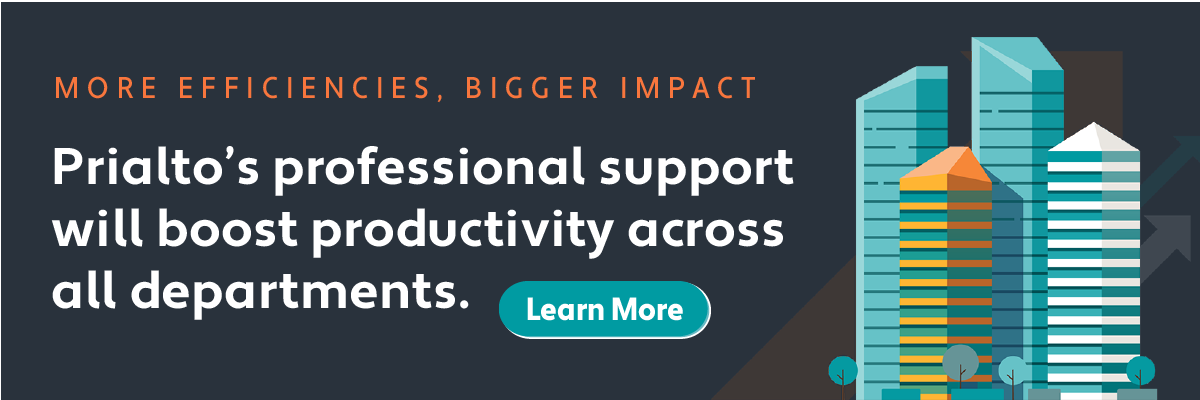An oft-quoted statistic is that up to 70 percent of CRM implementations fail. That's a shame because the potential for a CRM to streamline and accelerate sales is huge. Having an accurate view of your funnel and forecast and keeping your finger on your customers' pulse are just a few of the benefits of a successful CRM deployment.
If you're among the unlucky 70 percent, a good place to start is to step back and revisit training the platform's primary users. Training can address the three main reasons CRM implementations fail:
- Lack of adoption
- Inconsistent use
- Data decay
Lack of CRM Adoption
Just 40 percent of businesses achieve 90 percent adoption of their CRM platform. It all starts with training. You may have heard (or said) "We don't have time for training." Maybe that's why sales leaders spend up to four hours per day chasing down contact information and lead status—because they didn’t take the time to streamline the process in advance.
Training is essential to getting teams on board and using the CRM together. It also accelerates the benefits of the platform, which further spurs adoption.
According to CRM giant Salesforce, the primary reasons CRMs don't get wide adoption are all training related:
- Lack of strategy—read, fire, aim rarely works with sales teams (or any other role). They need a plan with goals and accountability.
- Believing that people can learn as they go—you can probably teach yourself to use a CRM but that doesn't help a team implement and harness the platform's power.
- Lack of internal expertise and support-if there's no internal expert/guardian of the CRM, you will likely see many of the problems that arise from inconsistent use (see below).
- Poor onboarding of teams onto the CRM—providing accounts and licenses isn't the same as training. It's not just about learning your way around the platform. It's about consistent use across the organization.
Related: 4 Ways Outsourcing CRM Management Can Boost Sales Productivity
Inconsistent Use of the CRM
CRMs thrive on consistency. Data needs to be entered and updated the same way by everyone that touches the CRM. That's where training pays the biggest dividends. If data is entered differently by different users, key CRM functions become difficult or impossible:
- Building lists—if everyone enters contact info the same, you can build lists based on criteria like company size, location, job titles, and market segments. If all these fields aren't used the same way, lists will be incomplete or erroneous.
- Forecasting—keep up with the status of opportunities, closing time frame, and deal size enables accurate forecasting. If that data is not kept up to date by all users, you won't have predictable revenue.
- Targeted marketing campaigns—one immense value of CRMs comes from tracking your best leads and customers' origins. Knowing a leads source, for example, can help you understand what marketing programs are most productive, and you can ramp them up with confidence.
Data Decay
Inconsistent use leads to inconsistent data. Even with consistent use of the CRM, 30 percent of contacts go out of date every year. People switch jobs, move to a new location, change their email addresses, etc. Data needs cleaning and updating regularly, and users need training on how and when to perform this kind of maintenance.
Once CRM data is unreliable, adoption drops further. Symptoms of data decay include:
- A high percentage of bounced emails
- Lists with incomplete fields
- Contacts assigned to the wrong people
- Inaccurate funnel information
Contact information decays faster when it isn't entered correctly in the first place. If users upload contacts using different fields, you've got apples and oranges and maybe some bananas scattered around the CRM database. Once someone reaches out to a lead without knowing that the opportunity was closed/lost, that might be the last time they use the CRM.
All is Not Lost
The good news is that you can undo all of these problems. It's not too late to train your team to foster the adoption, consistent use, and clean data that will power your sales.
"You need the buy-in and participation of everyone who interacts with customers directly as well as those who use customer data in the course of their work," Salesforce said; "They are going to require training, and there will need to be some change management to ensure the implementation sticks and encourages adoption."
Is it worth it? In addition to the 8x ROI strong CRM implementations deliver, companies report up to 300 percent growth lead conversions.
To learn more about how to clean up your CRM and harness that potential, download the ebook "How to Get Your CRM Back on Track." You’ll learn how to clean up your data, keep it clean, and get the results that a great CRM implementation can deliver.
About the Author: Bill is Prialto's senior content marketing manager and writes about the future of work and how businesses can be more productive and successful. His work has appeared in the World Economic Forum Agenda blog and CIO magazine.

